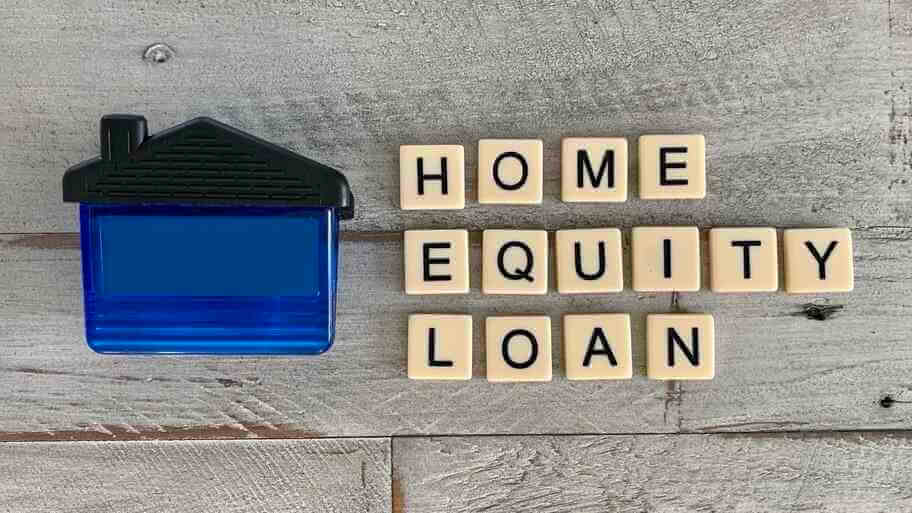Home equity/HELOC loans and cash-out refinancing allow you to tap into your home’s value when you need large sums of money. But these methods are all suitable for different types of borrowing needs. If you’re curious about how to best tap into your home’s value, this article is for you. Should you use HELOC or a cash out refinance? We will break down each option and examine when they are most suitable for you below.
What Is Home Equity?
Home equity is based on the difference between your mortgage balance and your home’s value.
With home equity-based loans comes a high level of security for lenders. Therefore, interest rates are much lower than any unsecured lending options (e.g., credit cards).
For some context, the average credit card interest in 2020 was 16.28%. The average interest rate for 15-year fixed loans involving home equity, however, was 5.69%.
What Is a Home Equity Loan?
When you take out a home equity loan, you receive a lump sum of cash. Generally, you’ll take out this loan for a one-off expense (e.g., wedding, renovations).
These are offered with fixed rates, meaning you’ll pay the same monthly interest for the loan’s duration.
Most lenders won’t go any lower than $35,000 for a home equity loan. You’ll also pay similar closing costs as you would for a first mortgage, which includes the following fees:
-
-
- Loan processing fees
- Origination fees
- Appraisal fees
- Recording fees
-
Also, you might be on the hook for pre-paid interest in the form of points, with each being equal to 1% of the loan value. The average pre-paid interest is between 2% and 5%.
For example, a $50,000 loan would cost $2,500 at 5% (or 5 points). While this all sounds like a pitfall, points generally lower your interest rate in the long run.
What Is a HELOC Loan?
HELOC stands for “Home Equity Line of Credit.”
When taking out a HELOC loan, know that it functions like a credit card, and the funds are at your disposal whenever you need them.
Depending on your bank, you can access your funds in the following ways:
-
-
- Writing checks
- Using a credit card linked to the account
- Online transfers
-
Unlike home equity loans, HELOCs don’t include any closing costs or points. You’re only paying based on what you spend.
HELOC loans tend to use a variable interest model, meaning the rates will fluctuate during the life of the loan. As a result, HELOCs are available with lower interest than home equity loans.
The main issue you might run into with these loans is using your HELOC for items you don’t need. Instead, HELOCs are best suited for when you need funds for essential purchases at different times.
What Makes You Eligible for Equity-Based Loans?
Equity-based loans are second mortgages. Your bank/financial institution will assess you similarly to how they would for other home loans.
Lenders weigh your property’s value and your own creditworthiness when deciding if you’re an ideal borrower. To show where you stand on this front, lenders use a combined loan-to-value (CLTV ratio). This might also be known as a home equity line of credit ltv.
Here’s how it works:
When a bank offers home equity line of credit limits of 80% to you, and your home is worth $300,000, but you owe $150,000, you’d qualify for a $90,000 HELOC loan.
Let’s do the math: $300,000 x 0.8 = $240,000 – $150,000 = $90,000.
Lastly, note that the higher the HELOC LTV ratio, the less equity you’ll have in your home. So, a home equity line of credit up to 95 LTV leaves you with only 5% equity if you go with the maximum of 95%.
HELOC Phases
HELOC loans come in two phases. Here’s a breakdown of how they work:
Phase 1
-
-
-
- Usually, there’s a draw period that lasts 10 years
- During this time, borrowers have on-demand access to their funds
- HELOCs only require interest-only payments throughout the draw period
-
-
Phase 2
-
-
-
- Phase 2 comes at the end of the draw period
- You can’t access additional funds at this point
- You’re now paying off the loan amount and remaining interest until your balance is finally zero
- Typically, there are 20-year repayment periods after the 10-year draw period
-
-
What Is Refinancing?
Refinancing is a popular option in real estate. It’s used to take your current mortgage and replace it with a new one with better terms or remortgaging.
Mortgage refinancing might offer you the following benefit to homeowners:
-
-
- Reduce monthly mortgage payment amounts
- Lessen your interest rate
- Decrease the number of years on a mortgage
- Add or remove borrowers from the loan obligation
- Provide access to cash
-
How Does Cash-Out Refinancing Work?
With cash-out refinancing, possible lenders examine and analyze the terms of the previous mortgage. Fair Credit means looking at the remaining loan balance and your credit profile as a borrower.
From this point, the lender makes an offer that pays off your previous loan and replaces it with a new one. You’re now paying monthly installments – likely at more favorable rates – on the refinancing loan.
Unlike standard refinancing options, a cash-out refinance loan puts cash in your hand.
Here’s how it works: cash-out refinancing can reach up to 125 LTV, making you eligible for up to 125% of your home’s value. The dollar amount exceeding the mortgage is then given to you in cash.
Home Equity/HELOC vs. Cash-Out Refinancing: Which Is Right For You?
Cash-out refinancing involves you paying off your old mortgage and taking on a new one.
On the other hand, equity-based loans mean you’ll have two mortgages. So, you’ll be indebted to two separate creditors who both have a possible claim on your home.
Loans using home equity charge less on closing costs, and they’re best suited for when you need a significant chunk of money for a specific reason. This might be one lump sum for a particular expenditure (i.e., home equity loans) or a line of credit for multiple essential purchases at different times (i.e., HELOC).
Anyone planning to stay long-term in their home and who can find cash-out refinance loans with low interest should strongly consider refinancing.
Really, though, no choice is better than the other. It all comes down to your specific needs.
Featured Image: Twenty20








